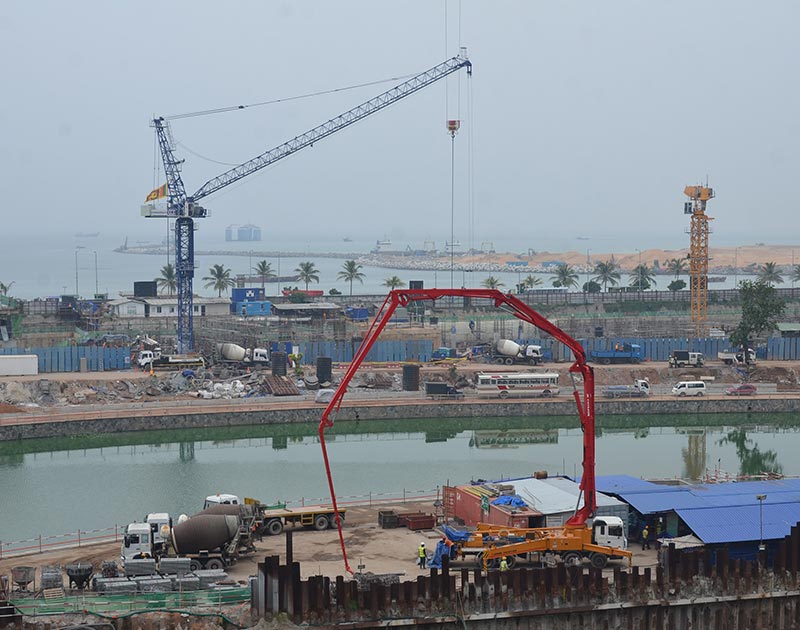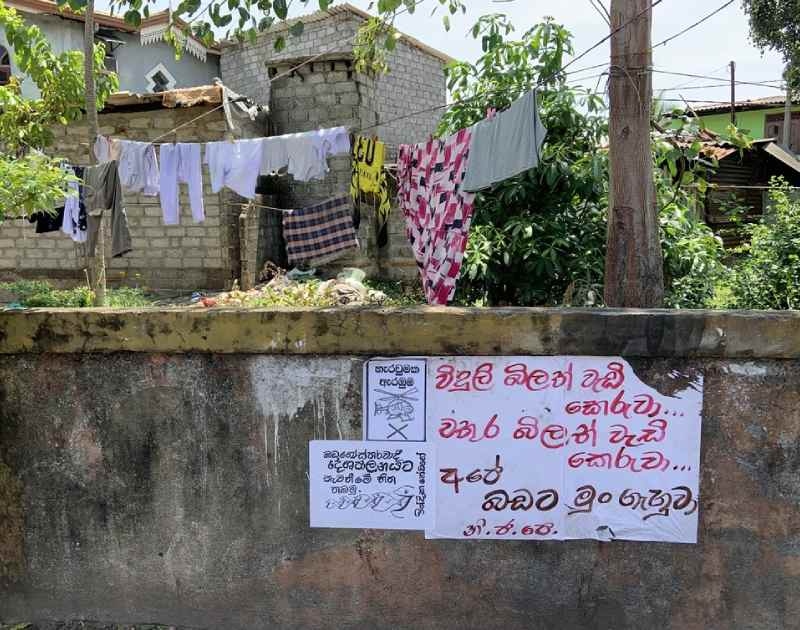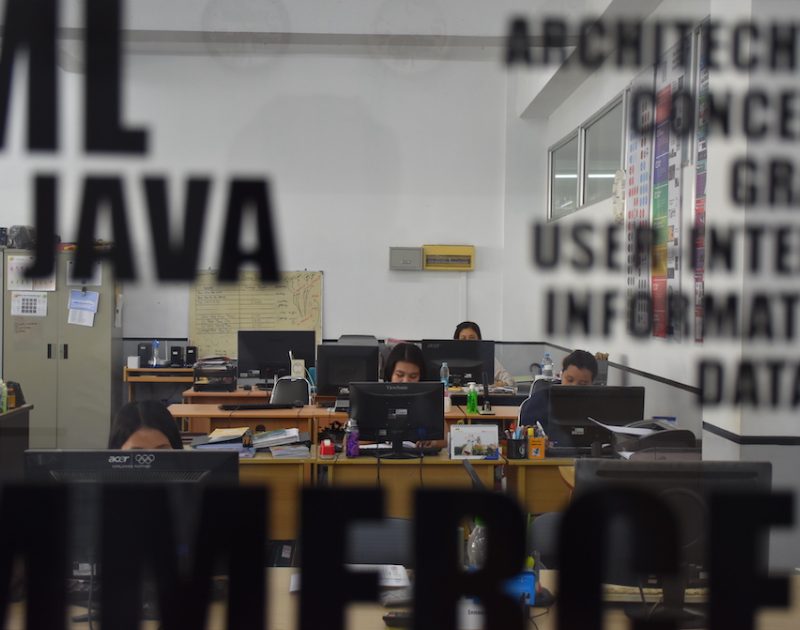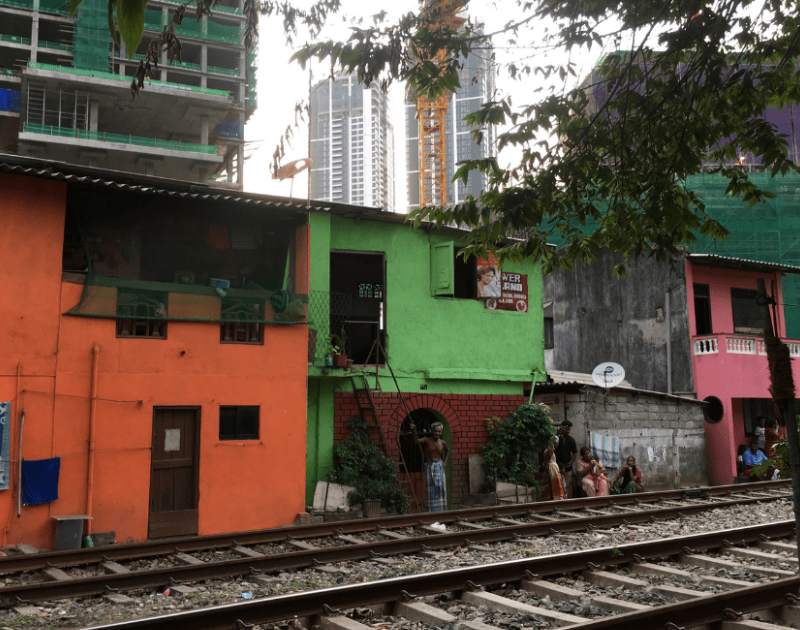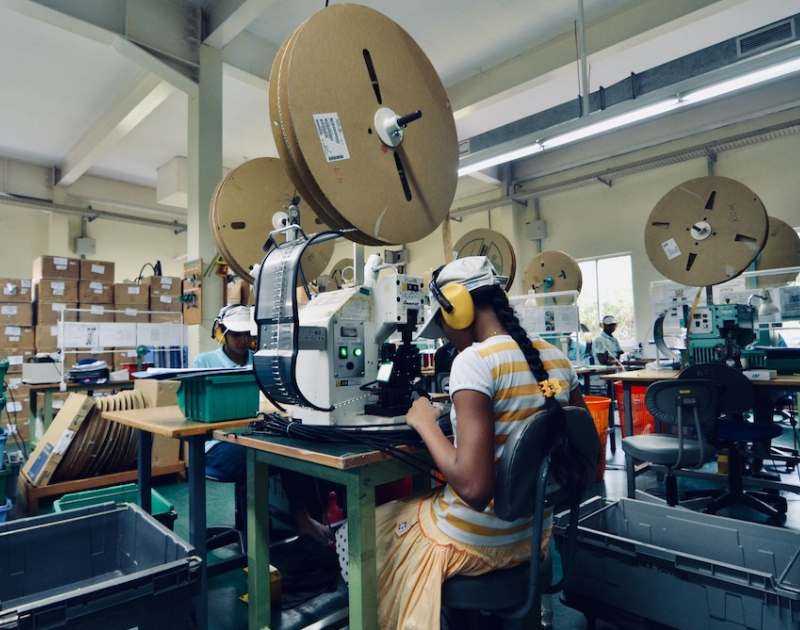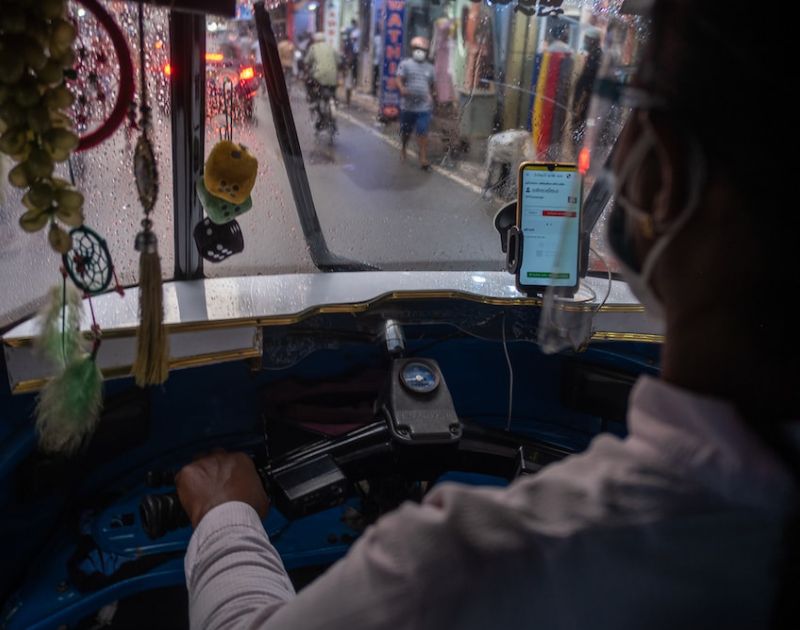
- Home
- Knowledge Insights
- Housing in a Pandemic: Need for New Methods of Engagement
Speech made by Colombo Urban Lab Director Iromi Perera at an event to mark Habitat Day 2021, organized by the Shramabhimani Center. The event was titled ‘Housing for all in a post pandemic world’ and this speech was delivered in Sinhala. The audience were residents living in the Colombo and Gampaha districts.
Thank you so much for the invitation to speak here today. Over the next 15 – 20 minutes I would like to talk a little about our experience working with working class poor communities in Colombo, particularly those who have been dispossessed over the last ten years in the name of development and then also talk about what we can learn from those experiences and take with us in our collective struggles whether it is on land, housing or development at large.
One thing that I have learnt in my work is that things don’t exist in separate categories. I know that a lot of this you will already know as you live it every day, so what I hope to leave you with is some ideas of rethinking through the way we have been doing our advocacy and use this moment in time to chart a path forward.
In Colombo, many of you must be aware of the Urban Regeneration Project or the URP by the UDA. It began under the Rajapaksa government in 2010 and continues to date. The URP aims to not only transform public spaces in Colombo through its beautification programme but it also aims to relocate 65,000 families to high-rise complexes built by the Urban Development Authority. Families were forcibly evicted from their homes, mainly by military personnel together with state officials. Even under yahapalanaya the relocations are still forced or involuntary even though there was no military in use.
The post war development plans created this ambitious idea of transforming Colombo into a ‘world class city’. So the URP, Port city, Nelum kuluna, the big hotels and high rises are all a part of that plan. The early years from 2010 – 2014 were very revealing about the kind of world class city those driving the project had in mind. It was a city of discipline and order, and everything had its place. Both the previous Rajapaksa government and the yahapalanaya government saw the urban poor as impediments to development and growth, and states so in official planning documents. For example, the Housing and Relocation chapter of the Megapolis masterplan stated that relocation of the urban poor is important in order to “release the economic corridors held by them”.
But what is the real picture of Colombo? The Government’s own statistics state that the urban poor communities who come under the Urban Regeneration Project constitute 50% of Colombo’s population and that they occupy 10% of the land. 50% of the city’s population occupying only 10% of the land, and they are being told that even that is too much for them.
For majority of the families that are being relocated to the high-rise apartment complexes over the last ten years, Colombo is home. It is their village. It is where most have lived for generations, setting down roots and incrementally building their homes over time. A survey of these community settlements in 2012 in fact showed that around 90% of the houses fell into the category of ‘permanently upgraded’. This number is a testament to the years of investment that communities have been making on their homes over time, as well as the State and local government support over the years to improve the infrastructure by way of water, sanitation and electricity provisioning. People have also been registered to vote for years from that address, pay rates and taxes, and have a diverse paper trail that they meticulously keep in files and boxes to show their connection to the land and their house. While not all have security of tenure and have been living on State or private land for decades, it is this recognition over time on paper by authorities that communities have derived legitimacy to their land and have made significant personal investments in their home and community. People spent hard earned money over the years on their housing and many who lost their homes had 2 or 3 storey houses. Many women who have worked in the Middle East all their life have no savings to show for their hard work, as all the money had been invested in their house.
These decades of history and investment is erased by a policy that labelled all of them as ‘underserved’, ‘encroachers’, ‘squatters’. This narrative not only painted communities as illegal but it also portrayed a dismal living environment, one that was derelict and affected by floods and mosquito borne diseases, and riddled with drugs and crime.
What I just spoke about regarding the communities in Colombo I know applies to so many of you also. You have lived in certain parts of the Western Province for generations or for decades, you have invested in your homes, even if it is a rented house. You have voted from that address, your own identity is very much link to this space you call home. And then suddenly in the face of development, or when you begin to talk about land rights – the state calls you illegal dwellers. People who have no claim to the land, as if you came last week and squatted on state property. This is the problem with the way laws are written and interpreted. They are written to protect the state, and not the citizens.
Let’s talk more numbers. In the UDA high rises, there are thousands of families living in 14 floor high rise complexes. Some of the older flats are 400 square feet and the newer ones are 500 square feet. The URP says this relocation is “palpathakin madurata” but these policies were designed by people who don’t understand the way of living of the people being moved, nor have they lived in a high rise themselves. They see their small houses and they don’t see the years of investment, they don’t see the community that has developed over time. All they see is “shanty” and “mudukku” and think that high rises must be like living in a palace for them. But for most families this is far from the truth.
There has never been an assessment of payment capacity of the households and imagines a regular and steady monthly income, which is not always the case for low income communities. There are several issues facing communities post relocation and some of the key issues are regarding debt – communities have to pay one million rupees over 20 to 30 years, and as most earn a daily wage this is a huge burden in addition to increased utility and maintenance bills. This payment has to be made irrespective of whether or not people owned their previous homes, for which they receive no compensation. This is on top of a decreased income as many people, especially women who worked in the informal sector lost their income generating activity in the relocation process. Communities were not relocated together, breaking care and kinship networks and creating an environment where complete strangers were now living next door to each other. This also made it an insecure environment for people to live in, particularly women and children, as strangers now roamed free in the public spaces and no one knew whether they lived in the building or not.
What Sri Lanka’s development policies also fail to take into account is that a house is not just bricks and mortar. Where people live in not just about their families, their history, where they invest their savings. People make decisions about where to live based on proximity to work or where they want their children to go. Beyond that, where we live also influences our access to food and nutrition as well. Did you know that despite majority of people being above the poverty line, the Western Province is the most food insecure province in the whole country? This is according to a report in 2018 by the Food and Agriculture Organization of the UN or FAO as it is commonly known. The report stated that Western Province is the most food insecure because people’s expenditure for non-food items are much higher compared to the rest of the country. So rent, utilities, transport, education costs are so high that people can’t afford a healthy diet. Several studies show that the main obstacle to consuming a healthy diet in Colombo district is not accessibility but cost. Not only is there high rates of food insecurity, but also higher rates of non communicable diseases like heart disease, cholesterol, diabetes, particularly among urban women in low income settlements.
So even before COVID hit this was the situation in the Colombo district among low income families as well the Western Province as a whole. We all know the devastating effects that COVID lockdowns have had on low income and middle income families. The communities that I work with in Colombo are mostly daily wage and they are able to meet their expenses as long as they can go to work. They could eat three meals a day, eat fresh fruit and vegetables and fish for three meals, send their children for tuition classes and pay their bills. But for months on end these communities have been under lockdown. In the high-rises, they put police and closed the gates for weeks so that no one could even leave the complex, not even to take their three wheelers out and earn a living. The only support they got was Rs 5000/- or Rs 2000/- and that too after long delays. What can anyone do with that kind of money? So the first thing people do is cut back on nutrition and meals. Then the debt starts to accumulate. The rent, the utilities, the mortgage, the tuition fees, the data for the mobile phone. Even when lockdown is lifted, no one will earn that lost income again. So how are people expected to recover?
Mental health issues due to all this stress and lockdowns is experienced by everyone is varying degrees and different ways. How do we find support for all of this?
I have been talking about lots of problems and lots of data. So to wrap up and move forward, the message I wanted to leave with all of you today is that like the various issues that people face in the name of development all takes place around a central place – their home. People’s livelihood and income, their aspirations and children, their dreams and hopes, their votes and official identification, their mental health and their physical health, their nutrition are all intertwined around this space they call home. So we can’t let policymakers and governments reduce it to “have a deed” or “don’t have a deed” or “illegal dweller” or “squatter” or “rented house” or “semi permanent house” or “shack”. We have to find ways in our activism to articulate that a house is not just bricks and mortar but an intersection of so many aspects of a human life. That not having a permanent home, not being able to buy land or build a home, being dispossessed from your home or being forced to live somewhere you did not choose are all factors that prevent us from living a full life as citizens.
One of the biggest lessons from this COVID period has been that our house is the safest place to be in and that our surroundings, even the ability to see trees or grow something in a small garden, for a woman to go out for a walk feeling safe or for children to play freely are all things that everyone should be entitled to. In our advocacy and the way we frame our arguments we have to find ways to use data and various intersections to make our points clear, even in a court room. Some things can’t be quantified nor are they tangible – so how do we translate that into a language that policy makers can understand? How do we take charge of the development plans and the infrastructure projects that affect our homes and day to day lives, and are paid for by public money? This is the challenge ahead of all of us – to rearticulate the policies, to go beyond the legal language and to take charge of the narrative.
